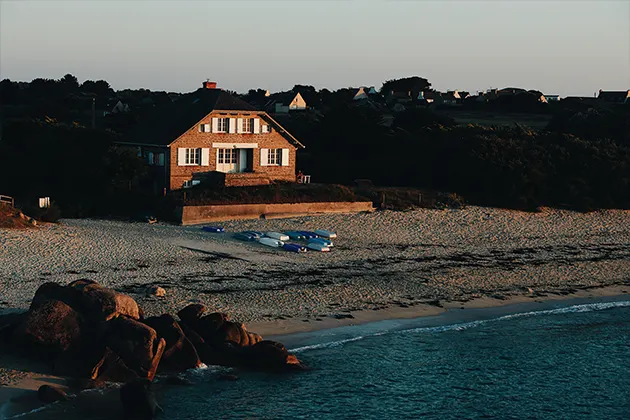Coastal California is known for its stunning views, ocean breezes, and diverse landscapes that continue to attract people to its shores. But building a “forever home” here takes more than just picking a beautiful spot. It requires careful planning that respects the environment and deals with the challenges of living by the coast. From materials to design, each choice reflects a desire to blend in with nature while focusing on stability and practicality.
The idea of a forever home is about adaptability and connection. It’s about creating a space that can grow with a family, adjust to future needs, and stay connected to the coastal ecosystem. In this context, the forever home becomes a mix of style, usability, and genuine care for the natural surroundings.
Building Longevity Begins With How the Site Is Handled in Pacific Palisades
Choosing the right site lays the groundwork for homes that can stand up to the coastal environment. Informed decisions from Pacific Palisades architects often rely on slope stability and scenic views, using tools like elevation modeling and setbacks on hillsides. This helps improve the look of the home while also making it safer and more durable, so it fits naturally into the hillside.
To handle earthquake risks, it’s smart to use structural elements like deep caissons and reinforced grade beams, which give the home a solid foundation. On the outside, marine-grade materials hold up better against the coastal air, helping the home last longer. A detailed site analysis leads to better design choices and greater long-term stability.
Microclimates Along the Coast Dictate How Homes Are Engineered
California’s coastal microclimates shape how homes are built. In Santa Barbara, high moisture levels demand materials that resist mold and water damage. In sun-soaked Laguna Beach, UV-resistant exteriors prevent fading. Climate-specific insulation helps maintain energy efficiency and keeps interiors comfortable throughout the year. Each region calls for designs tailored to its conditions.
Ventilation matters too—especially in humid areas—where good airflow helps reduce dampness and supports healthier indoor environments. But design isn’t only functional. Materials should also reflect the local setting, with a preference for those sourced nearby, to create homes that are both sustainable and resilient.
A Forever Home Anticipates Shifting Needs Over Decades
Designing a forever home means thinking ahead about how life might change. In places like Manhattan Beach, modern homes often feature open floor plans, wide hallways, and step-free entries. These features make the home more accessible and blend into the overall design without feeling out of place. They help create spaces that work for people of all ages and abilities.
Adding a secondary living unit can provide flexibility, whether for extended family or visiting guests. Thoughtful room placement helps balance privacy and community. This type of layout keeps the home useful and welcoming through all stages of life, making it easier to stay comfortable long-term.
Outdoor Space Isn’t an Add-On—It’s the Anchor
In coastal homes, outdoor space is central to the design. Malibu and La Jolla emphasize this with layouts that transition seamlessly from indoors to outdoors. Continuous flooring from living rooms to patios strengthens that connection, encouraging daily interaction with nature.
Outdoor kitchens reflect the importance of open-air living, built to withstand salty air and moisture—ideal for coastal conditions. Covered patios and lounges add comfort and protection, whether for entertaining or relaxing with the view. Landscaping enhances privacy and improves the home’s appearance. These elements support a lifestyle rooted in nature and outdoor living.
Rules and Regulations Shape What “Forever” Really Looks Like
Local building codes affect how homes are designed along the coast. Rules about building height and size—often set by the California Coastal Commission—help protect views and prevent overcrowding. These guidelines help keep the coastal character that makes the area special. Every design decision has to work within these limits, but that doesn’t mean creativity is off the table.
Staying within the rules while creating a unique home is part of the challenge. Features that follow the guidelines can still add a lot of style and character. Working with an architect who understands local codes can help you design a home that fits beautifully into the setting while standing out in its own way.
Building a forever home on California’s coast takes more than picking a pretty view—it’s about smart planning and thinking ahead. Choose a strong site, use materials that fit the climate, and design with future needs in mind. Open layouts, good airflow, and outdoor spaces that feel like part of the home all make a big difference. Local rules may shape what you can do, but they don’t have to limit your style. Work with people who understand the area. Focus on what really matters to you, and build a home that’s both beautiful and ready for whatever comes next.










